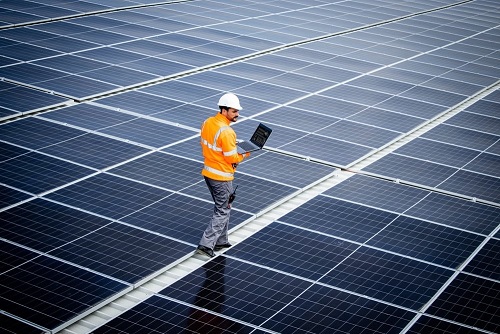Solar panels have become a hot topic in recent years, and for good reason. These innovative devices are revolutionizing the energy industry by harnessing the power of the sun to generate clean and sustainable electricity.
As the world becomes more conscious of the need to reduce greenhouse gas emissions and switch to renewable energy sources, solar panels have emerged as a key player in the transition to a more sustainable future.
The Basics of Solar Panels
Solar panels, also known as photovoltaic (PV) panels, are made up of multiple solar cells that convert sunlight into electricity. These solar cells are made of semiconducting materials, such as silicon, which absorb photons from the sun and release electrons. The flow of these electrons creates an electric current that can be used to power homes, businesses, and even entire cities.
The Impact on the Energy Industry
The adoption of solar panels has had a profound impact on the energy industry. Here are some of the ways in which solar panels are revolutionizing the sector:
1. Renewable Energy Source: Green energy solar panels provide a clean and renewable source of energy. By harnessing the power of the sun, they reduce dependence on fossil fuels and help combat climate change.
2. Lowering Energy Costs: Solar panels allow homeowners and businesses to generate their own electricity, reducing their reliance on the grid. This leads to significant cost savings on energy bills over the long term.
3. Job Creation: The growth of the solar industry has created numerous job opportunities. From manufacturing and installation to maintenance and sales, this sector has become a major source of employment.
4. Decentralization of Power: Solar panels enable energy production at the point of consumption. This decentralization reduces the need for long-distance transmission lines and can improve grid resilience, especially in remote areas or during natural disasters.
5. Energy Independence: Solar panels offer individuals and communities the opportunity to become energy independent. By generating their own electricity, they are less reliant on traditional energy sources and are better prepared for power outages.
6. Environmental Benefits: Solar energy is a clean and sustainable alternative to fossil fuels. By reducing greenhouse gas emissions, solar panels help mitigate climate change and improve air quality.
7. Infrastructure Development: The adoption of solar panels has led to the development of new infrastructure, such as solar farms and microgrids. These projects not only contribute to the expansion of renewable energy capacity but also create opportunities for local economic development.
8. Technological Advancements: The increasing demand for solar panels has driven innovation in solar technology. This has resulted in more efficient and affordable solar panels, as well as advancements in energy storage solutions.
9. Government Incentives: Many governments around the world offer incentives and subsidies to promote the adoption of solar panels. These include tax credits, grants, and feed-in tariffs, making solar energy more accessible and attractive to consumers.
10. Global Energy Transition: The widespread adoption of solar panels is helping to drive a global energy transition towards a more sustainable future. As more countries embrace solar energy, it is becoming a key part of the overall energy mix and reducing reliance on finite fossil fuel resources.
The Future of Solar Panels
The future of solar panels looks bright as advancements in technology continue to improve their efficiency and affordability. Here are some of the key developments to look out for:
1. Increased Efficiency: Researchers are constantly finding ways to improve the efficiency of solar panels, allowing them to convert more sunlight into usable energy. This can be achieved through the development of new materials and technologies, such as perovskite solar cells, which have shown promising results in laboratory tests.
2. Enhanced Storage: One of the main challenges with solar energy is its intermittent nature. However, advancements in energy storage technologies, such as lithium-ion batteries, are making it easier to store excess energy generated by solar panels for later use. This not only improves the reliability of solar power but also allows homeowners and businesses to become more self-sufficient.
3. Flexible and Lightweight Designs: Traditional solar panels are rigid and bulky, limiting their applications to rooftops and large-scale solar farms. However, researchers are working on developing flexible and lightweight solar panels that can be integrated into various surfaces, including windows, clothing, and even vehicles. This opens up a whole new range of possibilities for solar power generation.
4. Increased Affordability: Over the years, the cost of solar panels has significantly decreased, making them a more accessible option for homeowners and businesses. This trend is expected to continue as advancements in manufacturing processes and economies of scale drive down the production costs further. Additionally, government incentives and subsidies are promoting the adoption of solar energy, making it an increasingly attractive investment.
5. Integration with Smart Technology: The future of solar panels lies in their integration with smart technology and the Internet of Things (IoT). This allows for better monitoring, control, and optimization of solar energy systems. For example, homeowners can use smartphone apps to track their energy production and consumption, adjust settings, and even sell excess energy back to the grid. This level of connectivity and automation will further enhance the efficiency and convenience of solar power.
Overall, the future of solar panels looks promising, with advancements in efficiency, storage, design, affordability, and integration with smart technology. As these developments continue to progress, solar energy will play an increasingly significant role in our transition towards a sustainable and renewable future.
